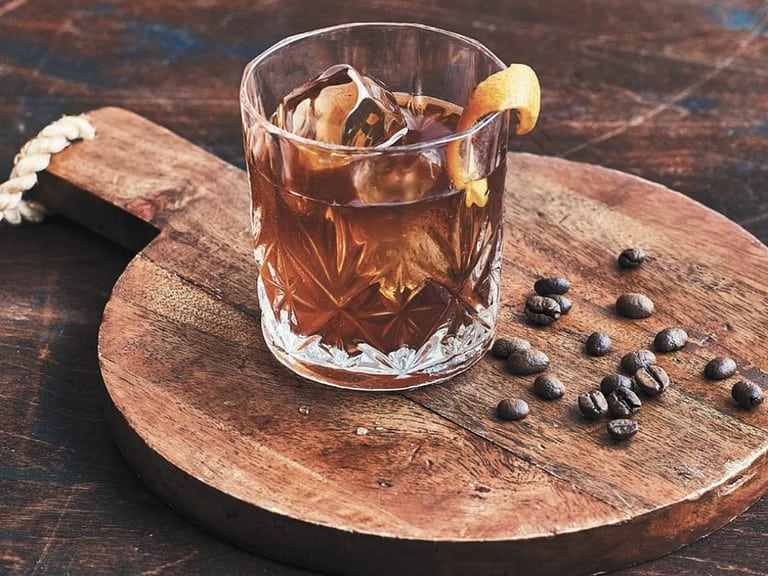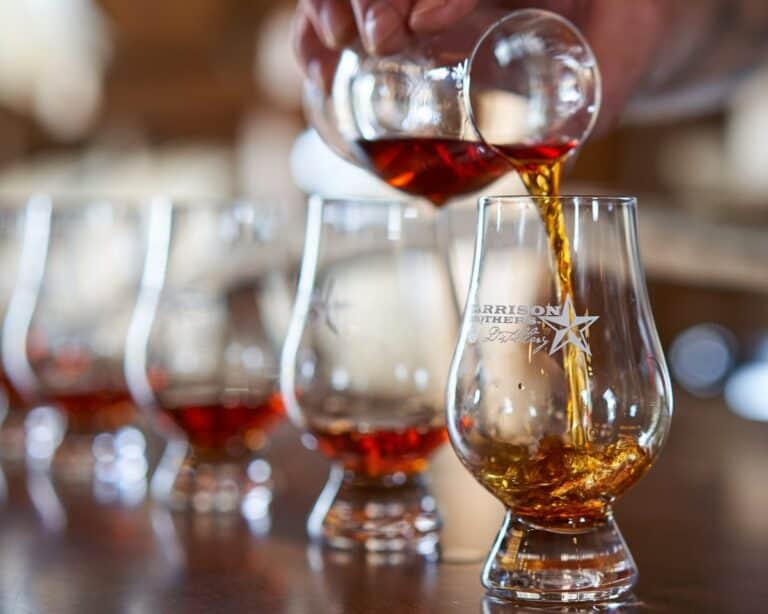Knob Creek Bourbon vs Maker’s Mark
Bourbon enthusiasts often find themselves at a crossroads when choosing between the robust character of Knob Creek Bourbon and the smooth subtlety of Maker’s Mark. This article aims to shed light on the intricate details that set these two storied brands apart.
Knob Creek, with its bold and full-bodied profile, beckons the connoisseur seeking a potent sip, while Maker’s Mark offers a gentler, more approachable experience with its soft, wheat-accented sweetness. As we navigate through their histories, production methods, and unique flavors, you’ll gain the knowledge needed to discern not just a good bourbon but the bourbon that’s good for you.
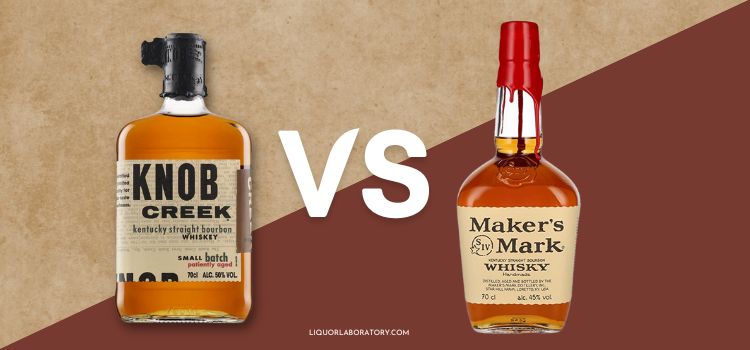
Whether you’re a seasoned sipper or new to the bourbon trail, this guide will enhance your understanding and appreciation of these two iconic labels. Let’s explore Knob Creek Bourbon vs Maker’s Mark, which one is best.
The Heritage of Bourbon
Bourbon, America’s native spirit, carries with it a legacy as rich and inviting as its taste. To be labeled bourbon, a whiskey must meet certain criteria: it must be produced in the United States, made from a grain mixture that is at least 51% corn, aged in new charred oak barrels, distilled to no more than 160 proof (80% alcohol by volume), and bottled at 80 proof or more. This stringent definition ensures that every bottle bearing the name ‘bourbon’ adheres to standards that have been honed over centuries.
The history of bourbon is a tapestry woven with tales of early American settlers, the birth of the whiskey rebellion, and the rise of distilleries that have become household names. It’s a history marked by ingenuity and resilience, where the spirit’s evolution mirrors that of the nation itself.
From the limestone-rich waters of Kentucky that nurture the grains to the charred oak barrels that impart bourbon’s signature caramel hue and vanilla notes, every step in the bourbon-making process is a testament to tradition and craftsmanship.

As bourbon continues to enjoy a renaissance, connoisseurs and casual drinkers alike are drawn to its complex flavors and storied past. Whether sipped neat, on the rocks or as the cornerstone of a classic cocktail, bourbon is more than just a drink—it’s an experience, a piece of American heritage that invites exploration and appreciation. So raise a glass to the spirit that captures the heart of America, one smooth sip at a time.
Knob Creek Bourbon
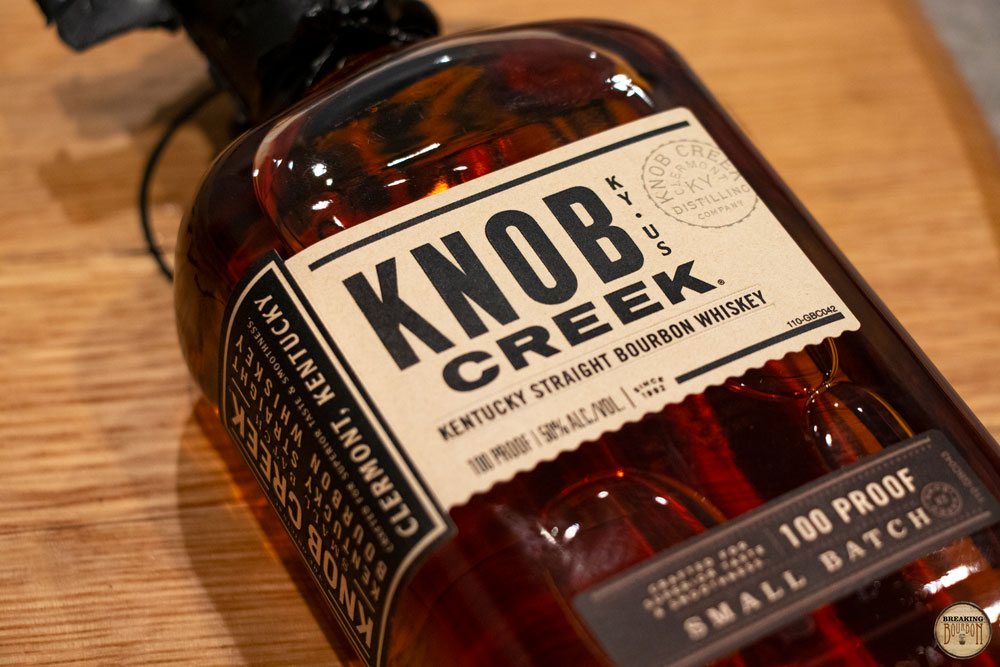
History and Distillery
Knob Creek Bourbon, named after the small stream that ran through President Abraham Lincoln’s childhood farm, is a testament to pre-prohibition whiskey-making. The brand, part of the Jim Beam family, was introduced in 1992 to revive the age-old traditions of crafting full-flavored bourbon. The distillery, nestled in the rolling hills of Kentucky, harnesses the natural limestone water and rich local grains to produce its distinctive spirit.
Flavor Profile
Knob Creek is renowned for its robust flavor, achieved through patient aging and a meticulous distillation process. Each sip reveals a bold profile with hints of toasted nuts, grains, and oak, leading to a long, warm, and slightly sweet finish. The bourbon’s signature richness comes from the extended aging process, often up to nine years, allowing the spirit to draw deep flavors from the charred American oak barrels.
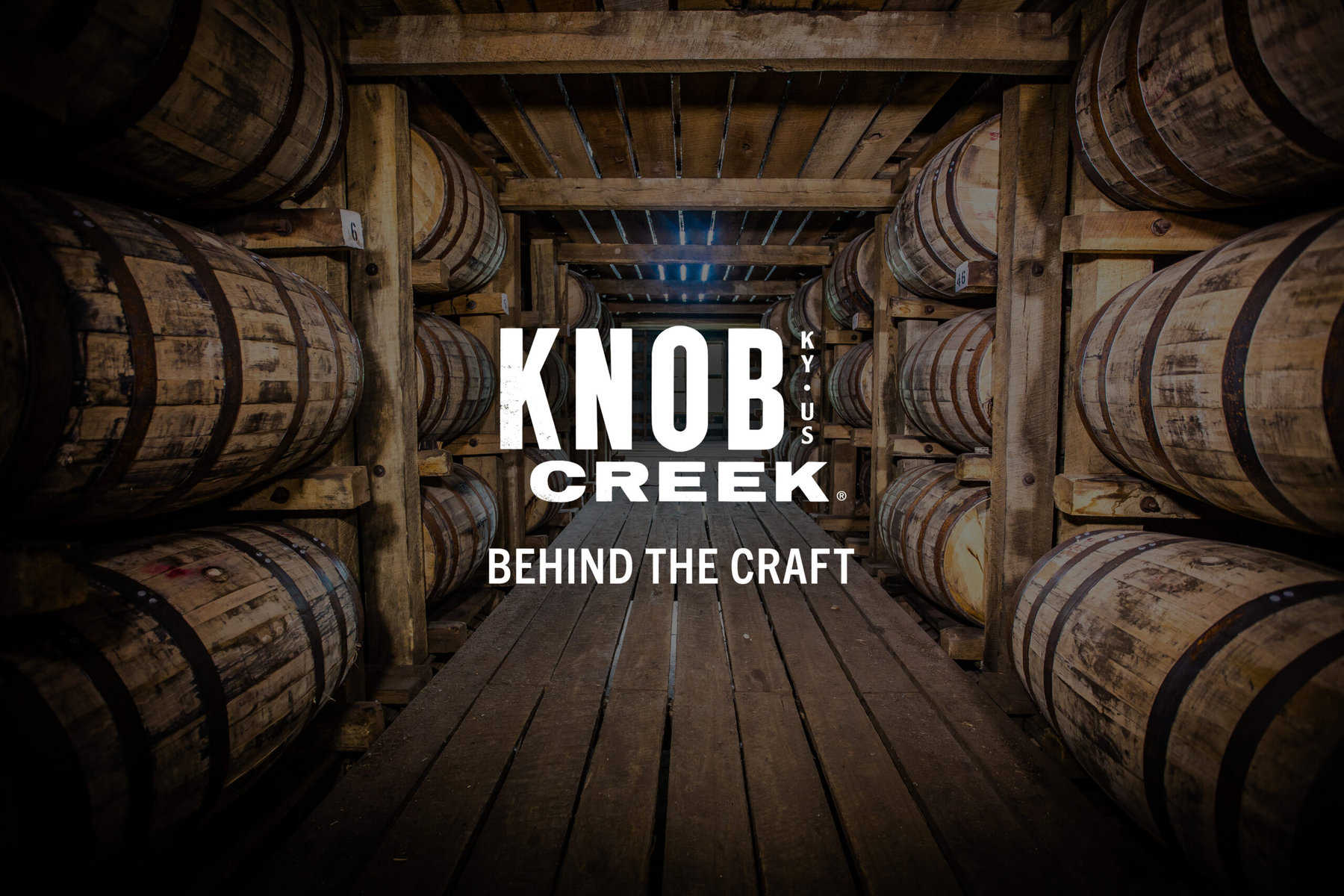
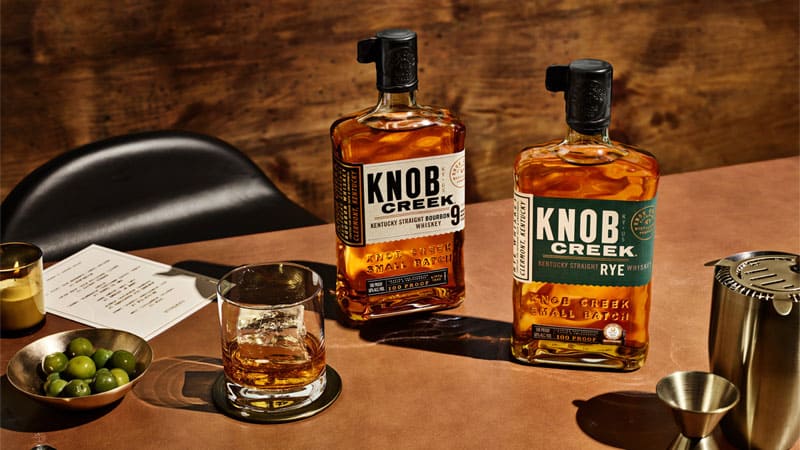
Variants and Special Editions
The Knob Creek range includes several expressions that cater to a variety of palates:
- Knob Creek Small Batch: The flagship bourbon known for its rich, full-bodied taste.
- Knob Creek Single Barrel Reserve: Bottled from individual aging barrels, each offering a unique flavor experience.
- Knob Creek Rye: A spicy yet smooth rye variant for those who prefer a little more bite.
- Knob Creek 2001 Limited Edition: A rare release that marks the transition between the distillery’s past and present master distillers.
Maker’s Mark

History and Distillery
Maker’s Mark stands as a symbol of the dedication to quality that characterizes Kentucky’s bourbon heritage. The distillery’s story began in 1953 when Bill Samuels Sr. purchased the “Burks’ Distillery” in Loretto, Kentucky, with the vision of creating a bourbon that would appeal to the palate without the traditional bourbon bite.
The Samuels family recipe, which replaced the traditional rye with soft red winter wheat, has remained unchanged since the first bottle was sealed with its iconic red wax.
Flavor Profile
The hallmark of Maker’s Mark is its smooth and approachable flavor. Each bottle offers a harmonious blend of sweet caramel, vanilla, and fruity essences with a light, spicy finish that’s easy on the palate. This mellow profile is the result of the wheat-based mash bill and the careful aging process, which is monitored until the bourbon reaches its peak flavor.
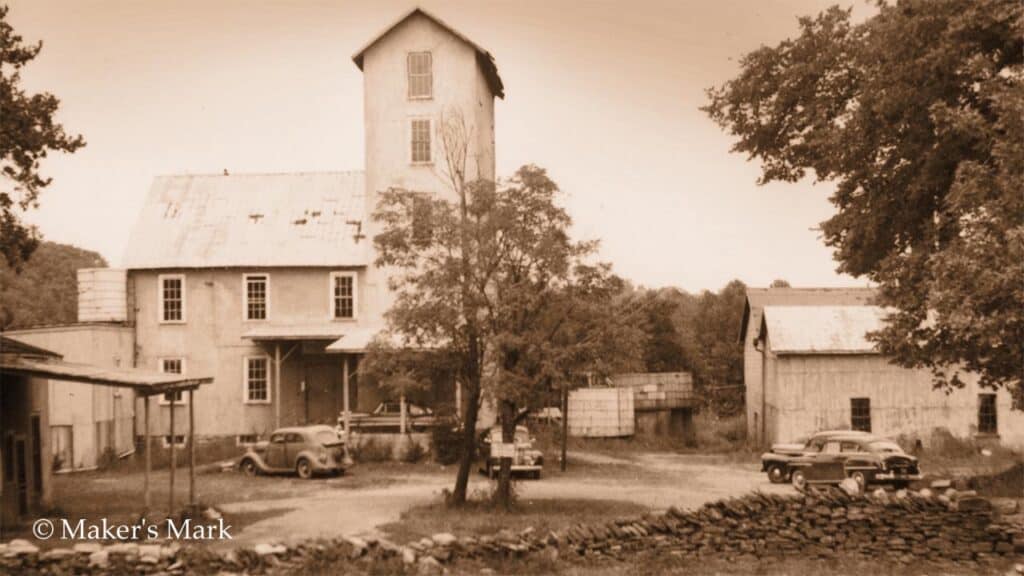
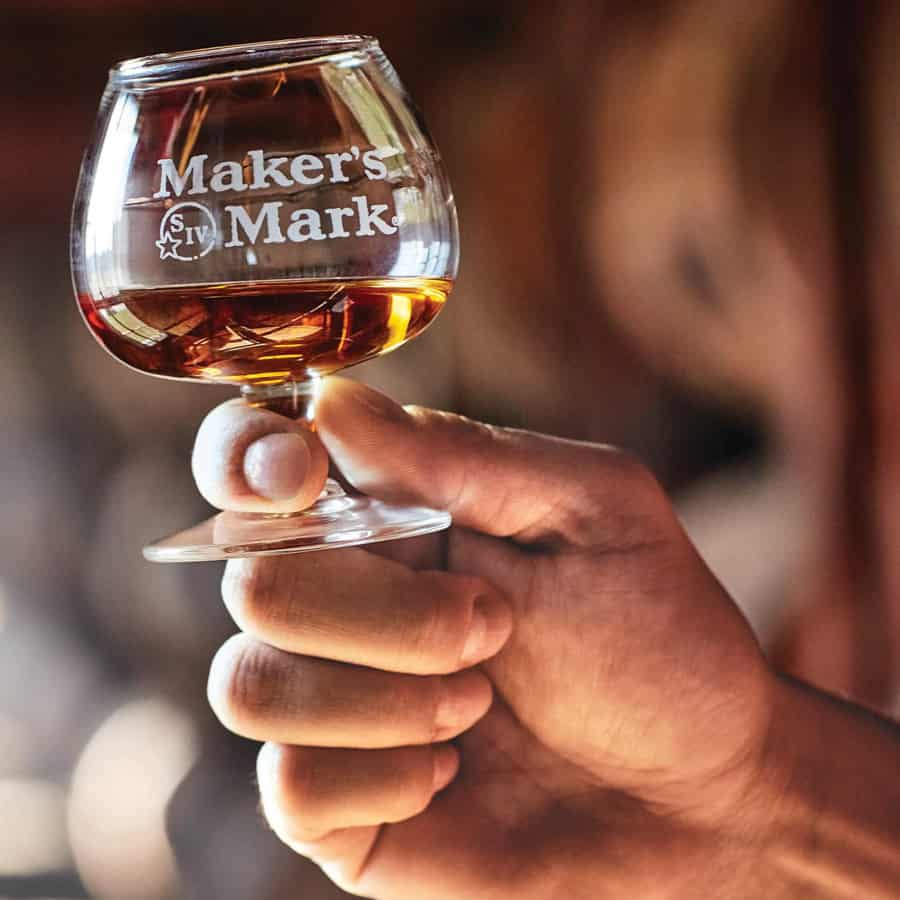
Variants and Special Editions
Maker’s Mark has expanded its offerings to include several variations that explore different facets of the bourbon experience:
- Maker’s Mark Original: The classic, time-honored recipe known for its smoothness.
- Maker’s 46: A bolder expression, finished with seared French oak staves for added complexity.
- Maker’s Mark Cask Strength: An uncut and unfiltered version that delivers a richer, more intense taste.
- Maker’s Mark Private Select: A program that allows retailers to create their own bespoke barrels by selecting unique combinations of wood-finishing staves.
Side-by-Side Comparison: Knob Creek Bourbon vs Maker’s Mark
When it comes to choosing between Knob Creek Bourbon and Maker’s Mark, the decision often boils down to personal preference. However, understanding the subtle and not-so-subtle differences between these two can guide aficionados toward their ideal bourbon experience.
Mash Bill Differences
Knob Creek Bourbon is crafted from a traditional mash bill that emphasizes corn, giving it a sweeter, fuller body. The high corn content, combined with a smaller proportion of rye, imparts a rich and robust flavor profile. In contrast, Maker’s Mark is famous for its use of soft red winter wheat instead of rye, which results in a smoother, gentler taste with less bite and a milder finish.

Maturation Process
The aging process is where much of the magic happens for bourbon. Knob Creek is aged for up to nine years, allowing it to develop deep, complex flavors and a strong oak influence. Maker’s Mark, while not carrying an age statement, is aged to taste, typically around six years. This shorter maturation period in Maker’s Mark’s limestone cellar maintains the whiskey’s lighter body and sweet, mellow character.
Flavor and Aroma
A head-to-head tasting reveals distinct profiles. Knob Creek offers a bold, spicy kick with notes of caramel, vanilla, and oak, followed by a long, warm finish. It’s a bourbon that commands attention and lingers on the palate. Maker’s Mark, on the other hand, is known for its smoothness, with a palate of honey, fruit, and soft spices and a clean, crisp finish. It’s inviting and easy to drink, making it a favorite for those who prefer a less intense bourbon experience.

Price Point and Accessibility
Both bourbons are widely available and priced competitively, though prices can vary based on location and the specific expression. Knob Creek generally sits at a slightly higher price point, reflecting its longer aging process and the premium nature of its small-batch production. Maker’s Mark, while also premium, is often more accessible price-wise, making it an excellent entry point for those new to bourbon.
Personalizing Your Bourbon Experience
Bourbon is a spirit that resonates with individuality, and personalizing your experience can elevate your enjoyment to new heights. Whether you’re a novice or a seasoned enthusiast, there’s always room to tailor your bourbon journey to your tastes.
Food Pairings
The rich and varied flavors of bourbon make it an excellent companion to a wide range of foods. For the robust Knob Creek, consider hearty dishes like smoked brisket or a rich, dark chocolate dessert that can stand up to its boldness. Maker’s Mark, with its softer profile, pairs delightfully with lighter fare such as pork tenderloin or creamy cheeses that complement its smooth sweetness.
Cocktail Recipes
Bourbon cocktails are a canvas for creativity. A classic Old Fashioned or Manhattan showcases the depth of Knob Creek, while a Mint Julep or Whiskey Sour might be the perfect match for the gentler Maker’s Mark. Experimenting with mixers and garnishes can lead to delightful discoveries that enhance the core characteristics of each bourbon.
Tasting Tips
To truly appreciate bourbon, consider the environment and your approach to tasting. A quiet setting, a clean palate, and a good nosing glass can make all the difference. Start by savoring the aroma, then take a small sip and let it coat your mouth. Note the initial flavors, the evolution on the palate, and the finish. With Knob Creek, you might find notes of oak and spice, while Maker’s Mark may reveal hints of caramel and fruit. Remember, there’s no right or wrong way to enjoy bourbon—it’s all about what pleases you.
Final Analysis
As we’ve journeyed through the rich landscapes of Knob Creek Bourbon vs Maker’s Mark, we’ve uncovered the unique characteristics that define these two beloved spirits. Knob Creek, with its bold and robust profile, offers a traditional bourbon experience that resonates with those who seek depth and intensity in their glass. Maker’s Mark, on the other hand, presents a softer, more approachable bourbon, perfect for those who appreciate a smoother sip.
The choice between Knob Creek and Maker’s Mark is not just a matter of taste—it’s a reflection of personal style and preference. Whether you’re drawn to the boldness of Knob Creek or the subtlety of Maker’s Mark, each bourbon provides a window into the soul of American whiskey-making. They embody the craftsmanship, heritage, and innovation that are the hallmarks of true Kentucky bourbon.
Ultimately, the best bourbon is the one you enjoy the most. It’s the one that suits your palate, complements your moments of relaxation, and enhances your celebrations. So, we encourage you to explore both Knob Creek and Maker’s Mark, to savor their stories, and to find your own favorite. May your bourbon journey be as rewarding as the spirits themselves. Cheers to discovery, enjoyment, and the timeless art of bourbon.
Jl.Surjan
Disclosure: Our blog contains affiliate links to products. We may receive a commission for purchases made through these links. However, this does not impact our reviews and comparisons. We try our best to keep things fair and balanced, in order to help you make the best choice for you.

